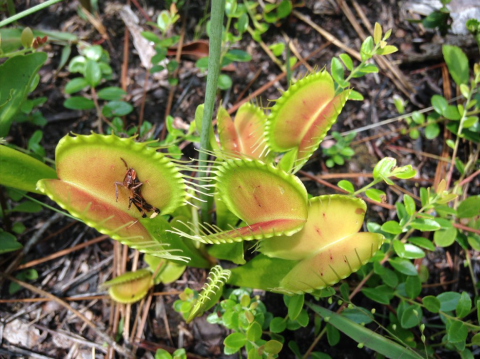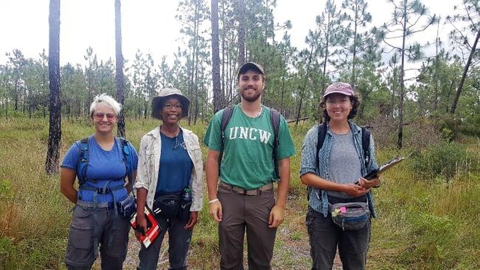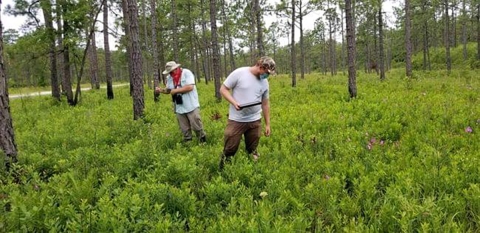Venus flytrap (Dionaea muscipula) is one of the most widely known carnivorous plants in the world. In his book Insectivorous Plants, Charles Darwin referred to Venus flytrap as “one of the most wonderful [plants] in the world. This unique species occurs naturally only in the Coastal Plain of southeastern North Carolina and northeastern South Carolina.
As of 2018, Venus flytrap plants occurred in 18 coastal counties and populations were considered extirpated, or historic, in three counties. The most recent range-wide study was conducted in 2002. Since then, many populations have been impacted or lost due to fire suppression, hydrological changes, poaching, or habitat conversion.
Yet some of the largest populations have come under protection and management as dedicated nature preserves. In 2019, there were approximately 124 populations in North Carolina and three in South Carolina.
In 2016, the U.S. Fish and Wildlife Service was petitioned to list the Venus flytrap. The Raleigh Field Office is currently evaluating the status of this at-risk species and will be conducting a Species Status Assessment (SSA) to determine if it warrants listing under the Endangered Species Act. To facilitate the SSA, the Raleigh Field Office’s Coastal Program established a cooperative agreement with the North Carolina Natural Heritage Program (NCNHP) to perform a range-wide status survey of the species.
In 2019, NCNHP biologists focused surveys at known populations on public lands such as the Croatan National Forest, Camp Lejeune Marine Corps Base, Holly Shelter Game Lands, Boiling Springs Lakes Plant Conservation Program Preserve and many others. Surveys of Venus flytraps on private lands were carried out in 2020. The surveys occurred during the spring and summer when Venus flytraps are most visible due to their flowering and fruiting structures.
The NCNHP contacted all landowners and land managers prior to conducting surveys for permission. Population counts were made by walking consecutive parallel transects approximately 5 meters wide, and counting all individuals seen within 2.5 meters of the surveyor. In dense sites with limited time (i.e. Camp Lejeune) an estimate for population size was extrapolated from a subsample of transects representing approximately 10% of the total population area.
Maps of each population were created using GPS and GIS and they assimilated current monitoring data from other sources to update the element occurrence records for NCNHP and the South Carolina Heritage Trust Program. At population centers where data are sufficient, trends will be analyzed. The NCNHP will follow-up with all participating landowners and managers to share survey results and information about land protection and suggest land management options.
The Venus flytrap survey team counted or estimated more than 440,000 plants in 2019, primarily on public lands. In 2020, Venus flytrap surveys on public and private lands yielded more than 70,000 plants. Additional surveys yielded more than 250,000 plants on preserves owned by The Nature Conservancy. The final report will address the total number of populations known, the total number of plants found and threats to the species that were observed at each site.







